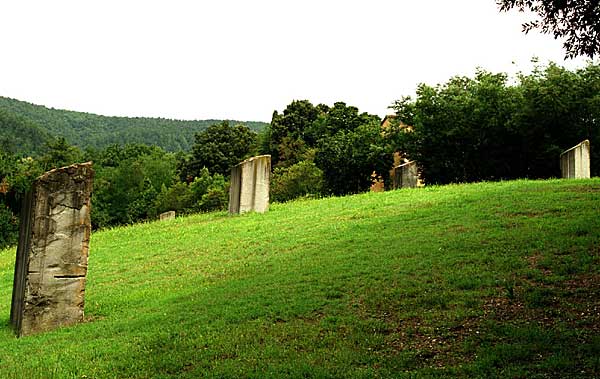Colección Giuliano Gori
Giuliano Gori, an Italian manufacturer born in Prato in 1930, has been gradually building up his collection of modern and contemporary art since his youth. Together with his collection of historic pieces, among which one can find a Christ from the twelfth-century Florentine School or works by artists such as Picasso, Morandi, Léger and Klee, his most novel contribution has been the creation of a sculpture park at his villa in Santomato, near Pistoia: the Fattoria di Celle. In 1956 Gori began a new stage as a collector of contemporary art. He was captivated by Venice and its Biennale and the artistic atmosphere of the All’Angelo café, formed around the art critic Giuseppe Marchiori, who was a very direct source of information that largely determined the course that he took as a collector. Soon his home in Prato became a meeting-place for encounters of artists and intellectuals, with frequent visits made by Jacques Lipchitz, Henry Moore and Alberto Mondadori, among others. And it was from this direct dialogue between collector and artist that Gori drew and developed the guiding lines for his collection. Gori was deeply impressed by a visit that he made to the Museo Nacional de Arte de Cataluña in 1959 with the aim of finding there the basis that provided inspiration for artists such as Picasso, Miró and Gaudí. In what way was that museum different from other museums of great importance, such as the Prado or the Galleria degli Uffizi? It did not take long to find the answer: the works of Romanesque art, whether paintings or sculptures, were conceived for a specific place. In that museum the works were presented as a group that had a unity with the recreated space for which they were conceived. From then on, Gori’s thoughts revolved around doing something similar by starting a collection of site-specific art in the gardens of his villa, where the setting was to be part of the creative process and the work, the personal mark of the artist, should exist only in space and time. This idea was strengthened in the seventies, when the appearance of the first attempts in this novel field in Documenta at Kassel and in the Biennale di Venezia showed Gori that it could be carried out. In the middle of 1981 Gori assembled a committee consisting of various experts on contemporary art—Amnon Barzel, Renato Barilli, Francesco Gurrieri, Knud Jensen and Manfred Schneckenburger—with the idea of offering the setting and gardens of his Fattoria di Celle, situated on the hills of Pistoia, to locate and carry out site-specific artistic projects, in accordance with a dictum proposed by Carlo Belli: “the rights of art begin where the rights of nature end”. The first fifteen installations took place in June 1982, nine in the villa gardens and six in the rooms of the villa itself. Among the artists represented there are outstanding works outside the villa by Robert Morris, Magdalena Abakanowicz, Alan Sonfist, Richard Serra, Alice Aycock and Dennis Oppenheim. Alongside them, works by the Italians Mauro Staccioli, Giuseppe Spagnulo, Fabrizio Corneli. Enrico Castellani and Richard Long works link the exterior and the interior, leading to an abundance of artists whose works can be seen in the rooms inside the villa, such as Emilio Vedova, Giuseppe Chiari, Gianni Ruffi, Michelangelo Pistoletto, Luciano Fabro and Guiseppe Penone, among many others. The exhibition at the IVAM will present the maquettes and preliminary drawings for the projects carried out in the gardens of this Renaissance villa, together with a selection from its the Gori’s historic collection, consisting of works by Picasso, Braque, Léger, Savinio, Balla, Calder, Moore, Licini, Fontana, Morris Louis and Kemeny, among others.



